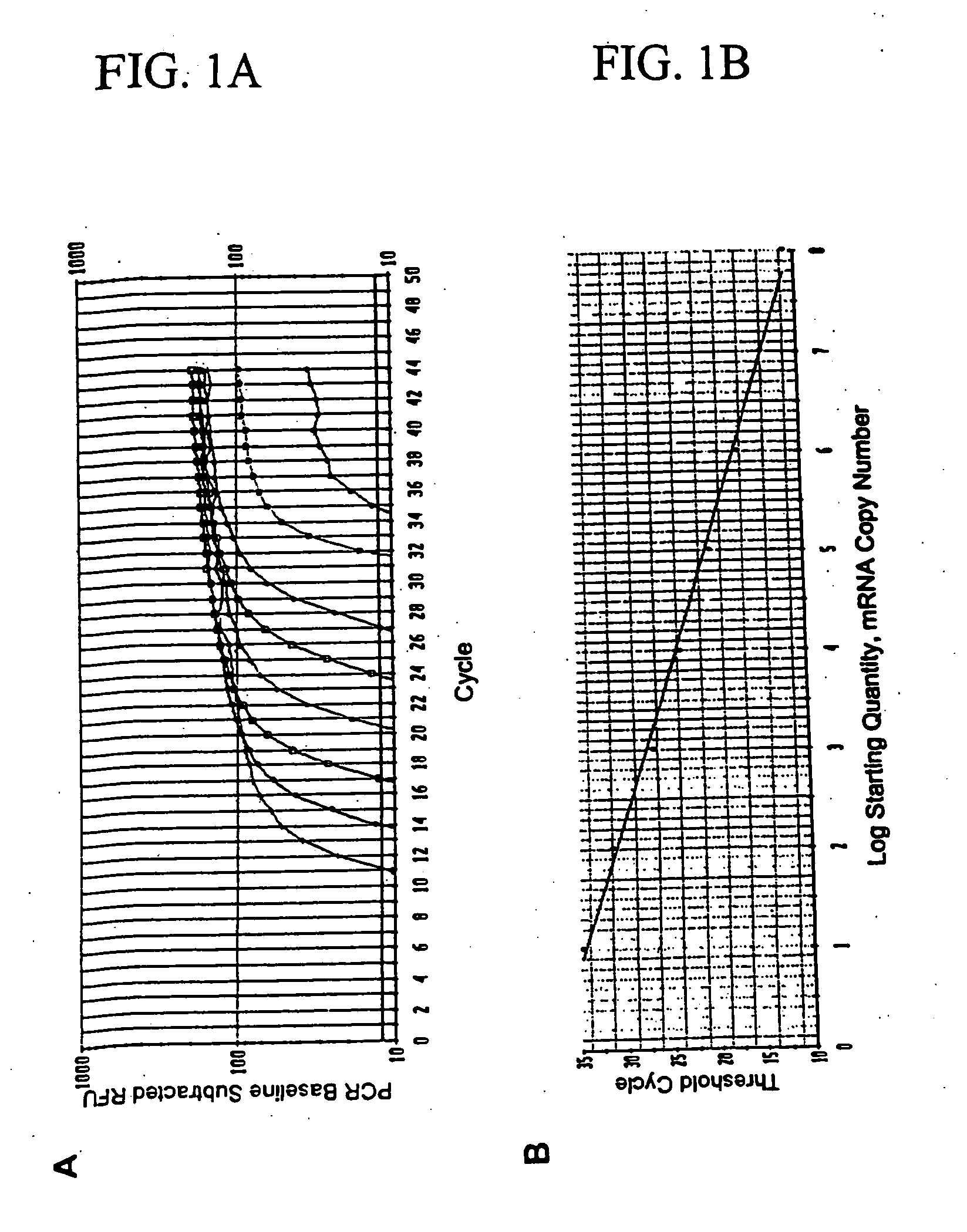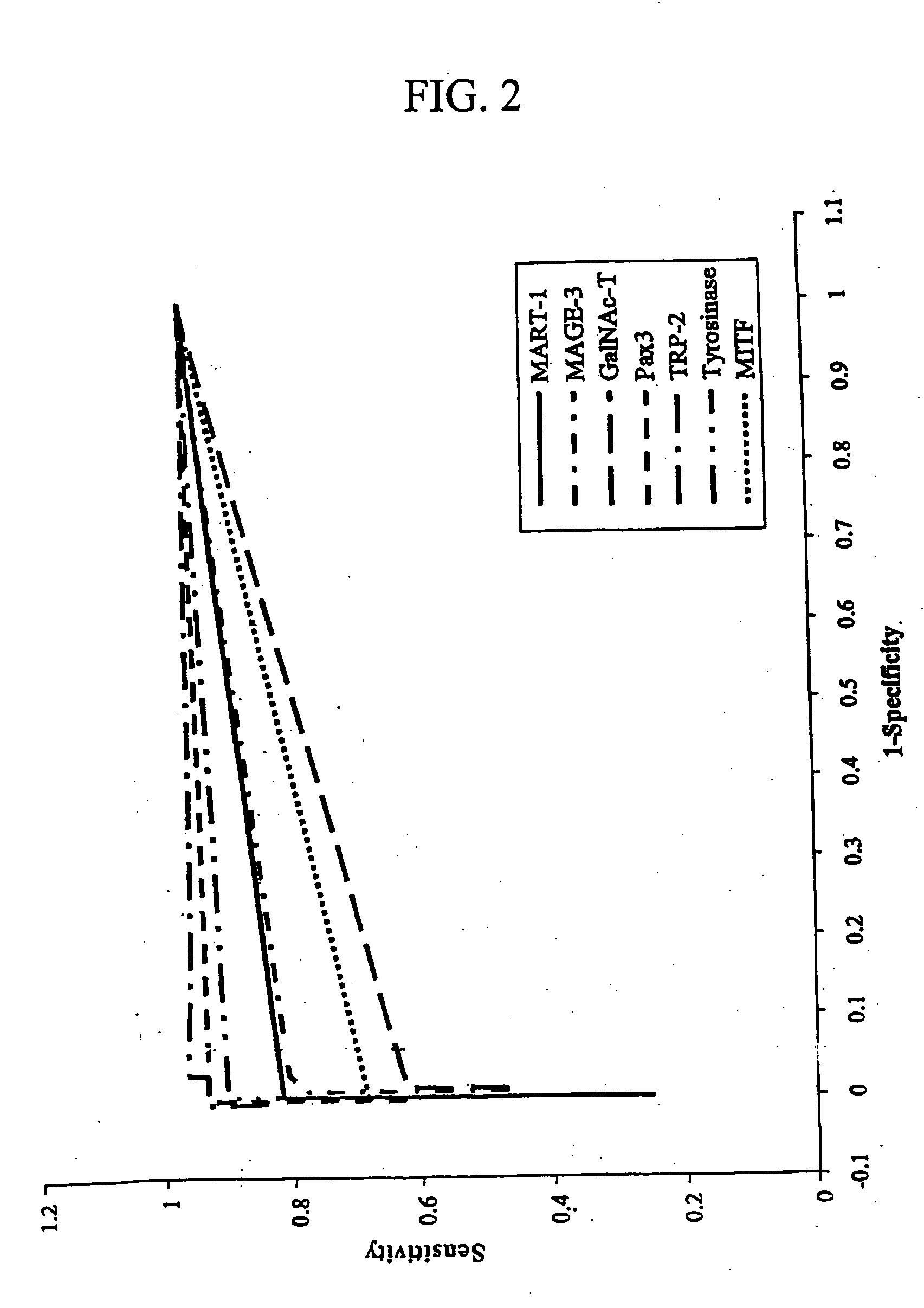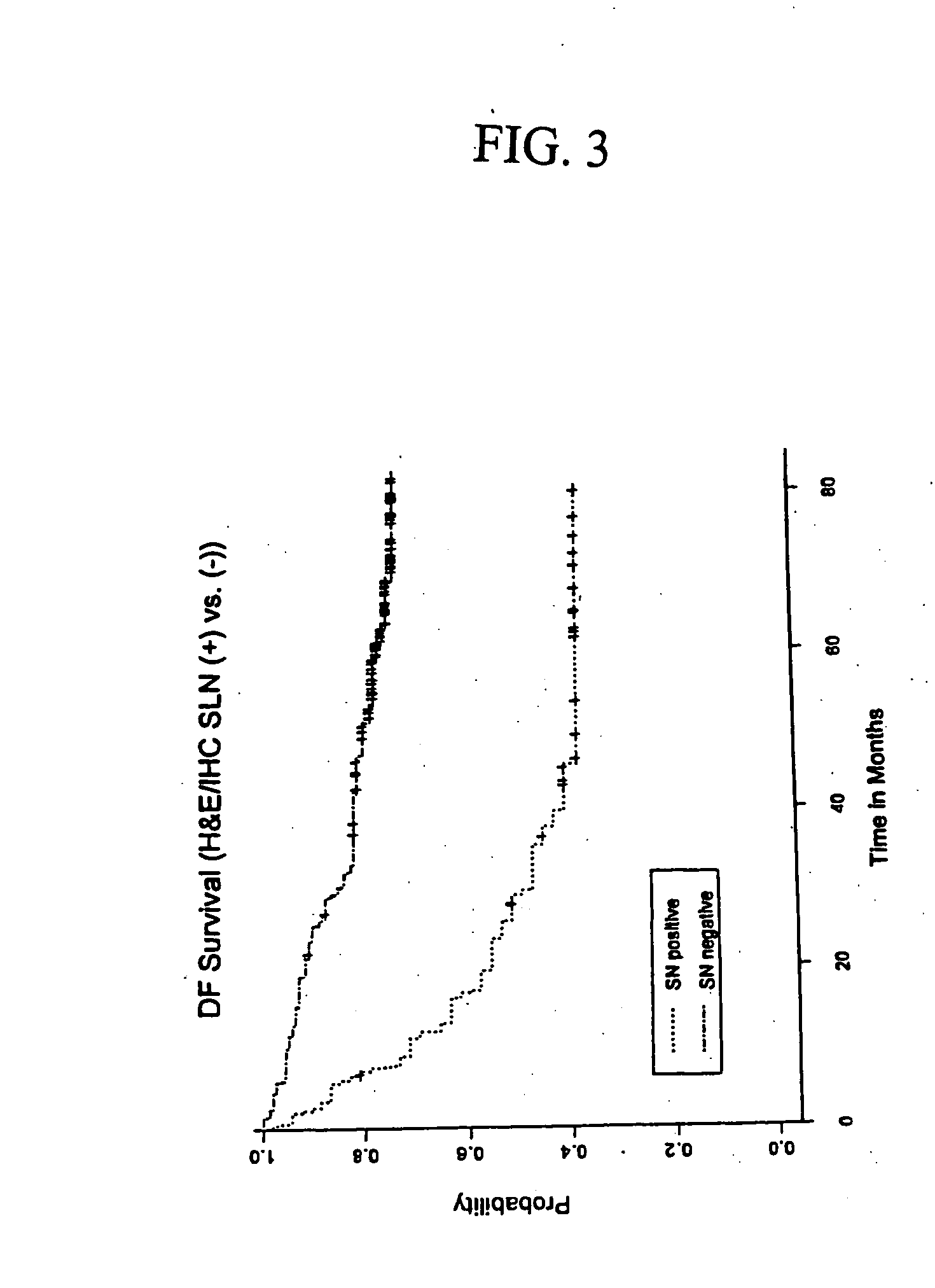Detection of micro metastasis of melanoma and breast cancer in paraffin-embedded tumor draining lymph nodes by multimarker quantitative RT-PCR
a paraffin-embedded tumor and micro-metastasis technology, applied in the field of paraffin-embedded tumor micro-metastasis detection, can solve the problems of malignant neoplasms' tendency to disseminate cells, high labor intensity of approaches, and often underestimate the presence of micro-metastatic disease in procedures. , to achieve the effect of accurate determination, high sensitivity and specificity
- Summary
- Abstract
- Description
- Claims
- Application Information
AI Technical Summary
Benefits of technology
Problems solved by technology
Method used
Image
Examples
example 2
[0064] Histopathologic Examination and RNA Isolation
[0065] Histopathologic examination by the pathologists was performed on each collected SN as previously described (Bostick, P. J., 1999, which is incorporated herin by the reference). Each SN was bisected, and an 8-.mu.m imprint slide was then prepared from the tissue surface and stained with Diff-Quik I & II (Dade International, Miami, Fla.) for the pathologist's intraoperative diagnosis. If melanoma cells were identified in the frozen section, a complete lymph node dissection was then performed (Bostick, P. J., 1999). Six immediately adjacent frozen sections were cut on the cryostat to a thickness of 12 .mu.m each and stored at -80.degree. C. until processed at a later date (Bostick, P. J., 1999; Miyashiro, I., 2001). The remainder of the bisected node, which was not frozen, was then placed in 10% formalin and embedded in paraffin, and 4-.mu.m-thick sections were examined with H&E staining. Adjacent 4-.mu.m-thick sections werre e...
example 3
[0067] Dilution Study To verify the specificity of detecting occult metastasis, total RNA was extracted from 1000 melanoma cells of obviously metastatic melanoma tissue (n=8) in PE sections using laser capture microdissection (LCM). Five-.mu.m thick sections were cut from each tissue specimen embedded in paraffin using a microtomb and mounted on a slide. Then, tissue sections were deparaffinized with xylene and subsequently stained with H&E. After drying a slide, 1000 metastatic melanoma cells were microdissected using the PixCell II LCM System (Arcturus Engineering, Mountain View, Calif.) as manufacture's procedure. Microdissected tissues were digested with proteinase K and total RNA was extracted using the Paraffin Block RNA Isolation Kit (Ambion). RNA isolated from 1000 melanoma cells was dissolved in molecular grade water, and was serially diluted by 1 / 2, {fraction (1 / 10)}, {fraction (1 / 20)}, {fraction (1 / 50)}, {fraction (1 / 100)}, {fraction (1 / 500)}, and {fraction (1 / 1000)}. Rev...
example 4
[0068] Primers and Probes
[0069] Primer and probe sequences were designed for the RealTime PCR assay using Oligo Primer Analysis Software, version 5.0 (National Biomedical systems, Plymouth, Minn.). To avoid possible amplification of contaminating genomic DNA, primers were designed so that each PCR product covered at least one intron. Fluorescence Resonance Energy Transfer (FRET) probe sequences were as follows:
1 MART-1: 5'-FAM-CAG AAC AGT CAC CAC CAC CTT ATT-BHQ-1-3'; (SEQ ID NO:1) MAGE-A3: 5'-FAM-AGC TCC TGC CCA CAC TCC CGC CTG T-BHQ-1-3'; (SEQ ID NO:2) GalNAcT: 5'-CAL RED-ATG AGG CTG CTT TCA CTA TCC GCA-BHQ-2-3'; (SEQ ID NO:3) PAX3, 5'-FAM-CCA GAC TGA TTA CGC GCT CTC CC-BHQ-1-3'; (SEQ ID NO:4) Glyceraldehydes-3-phosphate dehydrogenase (GAPDH): 5'-FAM-CAG CAA TGC CTC CTG CAC CAC CAA-BHQ-1-3'. (SEQ ID NO:5)
[0070] Control melanomas and non-melanoma tissues and cell lines were used to optimize the assay. GAPDH was utilized as internal reference house-keeping genes for status of sample...
PUM
| Property | Measurement | Unit |
|---|---|---|
| Fraction | aaaaa | aaaaa |
| Fraction | aaaaa | aaaaa |
Abstract
Description
Claims
Application Information
 Login to View More
Login to View More - R&D
- Intellectual Property
- Life Sciences
- Materials
- Tech Scout
- Unparalleled Data Quality
- Higher Quality Content
- 60% Fewer Hallucinations
Browse by: Latest US Patents, China's latest patents, Technical Efficacy Thesaurus, Application Domain, Technology Topic, Popular Technical Reports.
© 2025 PatSnap. All rights reserved.Legal|Privacy policy|Modern Slavery Act Transparency Statement|Sitemap|About US| Contact US: help@patsnap.com



